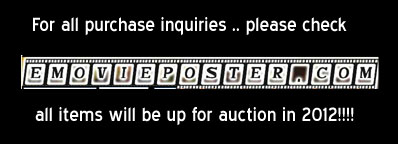| |
 |
 |
|
 |

Chicago bars, nightclubs, and restaurants ..
Check out this guide to
Chicago
Planning a trip to Tokyo?
Check out this guide to
Tokyo, Japan
|
|
|
|
Suspense
»
Action
»
»
|
|
The Italian Job
1969 Michael Caine
Paramount Pictures' "The Italian Job," which opened in 1969, has a long history of cinematic tradition behind it. "The Italian Job" is what is commonly known as a "heist" or robbery film. The genre goes back as far in film history as the Western and is as popular with audiences.
The first heist film (ironically, the first "Western" as well), was "The Great Train Robbery," made in 1903 and directed by Edwin S. Porter. The film only lasted 11 minutes, but it was the longest of its time.
Like the Western, the heist film comes into and goes out of cinematic fashion periodically. It is difficult to date when the present absorption with the heist film began. Perhaps it was with John Huston's "The Asphalt Jungle" in 1950. This was also the film which launched Marilyn Monroe's career:
she caught the eye of the public with a crazy, almost sideways walk that Huston devised for her.
In 1955, American director Jules Dassin, working in France, made what might be called the definitive
|
serious heist film, when he turned out "Rififi," best-remembered for its 20 minutes of dead silence on the screen, while the jewel theft, planned to the last detail, was executed.
Some years later, a noted Italian director, Mario Monicelli, executed a brilliant spoof of "Rififi" titled "Big Deal on Madonna Street." The film starred Vittorio Gassman and Marcello Mastroianni and was a howling success. It depicted the efforts of a gang of bumbling crooks and a ridiculously complex scheme for breaking into a pawnbroker's safe.
"The Italian Job," even to its setting, is most likely descended from the line of films inspired by "Big Deal," for Monicelli's film was not merely a heist film, it was a comedy-heist film-the first of a very popular addition to the ilk. Comedy heists are enjoyed so much by film-goers, that even Dassin felt obliged to try his hand at one with "Topkapi." In the film, Maximillian Schell, Melina Mercouri, Peter Ustinov and Robert Morely set out to rob the Museum of the Sultans in Istanbul.
In William Wyler's "How to Steal a Million" and in Ronald Neame's "Gambit," Peter O'Toole and Michael Caine, respectively, showed how to make money by stealing art masterpieces and replacing them with forgeries.
The list is a long one, the robberies many and varied, but Paramount's "The Italian Job" shows a heist that must rank as a cinematic
first: $4,000,000 in bullion are stolen by Michael Caine and his motley crew, when they snarl the traffic of Turin, Italy, into history's biggest traffic jam. The entire operation is directed from the safety of an English prison, by arch mastermind Noel Coward. The robbery is carried out under the noses of two opposing forces: the Italian police and the Mafia.
"The Italian Job" was produced in Color and Panavision by Michael Deeley, and was directed by Peter Collinson from a screenplay by Troy Kennedy Martin.
|
|
CAST
Charlie Croker .......................... MICHAEL CAINE
Mr. Bridger .......................... NOEL COWARD
Lorna .......................... MAGGIE BLYE
Professor Simon Peach .......................... BENNY HILL
Freddie .......................... TONY BECKLEY
Altabani .......................... RAF VALLONE
Beckerman .......................... ROSSANO BRAZZI
Madame Beckerman .......................... LELIA GOLDONI
Bill Bailey .......................... GEORGE INNES
Big William .......................... HARRY BAIRD
Yellow .......................... ROBERT POWELL
Frank .......................... JOHN FORGEHAM
Arfur .......................... MICHAEL STANDING
Rozzer .......................... DEREK WARE
Roger .......................... FRANK JARVIS
Coco .......................... STANLEY CAINE
CREDITS
Producer, Michael Deeley; Director, Peter Collinson; Screenplay by Troy Kennedy Martin; Production Manager, Derek Kavanagh; Production Designer, Disley Jones;
Art Director, Michael Knight; Music by Quincy Jones; 1st Assistant Director, Scott Wodehouse; 2nd Unit Director, Philip Wrestler; Camera Operators, Chic Waterson, Ronnie Maasz and Wally Byatt; Sound Mixers, John Aldred, Laurie Clarkson; Sound Camera Operator, Brian Knott; Chief Make-up Artist, Freddie Williamson; Hairdresser, Gordon Bond; Dress Designer, Dinah Greet; Wardrobe Supervisor, Dulcie Midwinter; Wardrobe Master, Roy Ponting; Special Effects, Pat Moore, Ken Morris; Editor, Steven Warwick.
|

|
|
|







